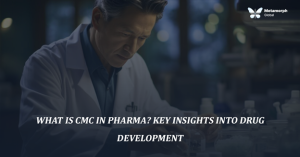The biopharmaceutical industry operates at the intersection of innovation and precision. As therapies move through their development lifecycle, regulatory expectations evolve, demanding tailored strategies at each stage to ensure product quality, safety, and efficacy. Adopting phase-appropriate regulatory and compliance approaches is critical not only for achieving market approval but also for fostering efficiency and reducing costs during development.
This article explores the concept of phase-appropriate compliance, emphasizing its role in navigating the complex regulatory landscape and its impact on biopharmaceutical success.
Phase-Appropriate Compliance: A Strategic Necessity
Early Stages: Preclinical and Phase I Trials
During the initial stages, compliance focuses on demonstrating the safety of investigational products while maintaining flexibility in manufacturing processes. Key aspects include:
- Good Manufacturing Practices (GMP): Adherence to basic GMP ensures products meet minimal safety standards during early human trials.
- Analytical Method Validation: Early-stage validation ensures consistency in measuring critical quality attributes (CQAs).
- Stability Testing: Initial tests establish preliminary shelf-life parameters for clinical trial materials.
Mid-Development: Phase II Trials
As trials expand, regulatory agencies expect more comprehensive data:
- Data Integrity: Robust systems ensure all trial data is accurate, complete, and traceable.
- Process Validation: Scaling up production requires consistency in manufacturing while maintaining product quality.
- Risk-Based Controls: Implementing advanced quality systems aligns with increasing trial complexities.
Late-Stage: Phase III and Commercialization
In the final stages, nearly commercial-level compliance is required:
- Comprehensive Validation: Process validation and analytical method refinement demonstrate reliability at production scale.
- Detailed Stability Studies: Extensive data supports long-term storage and ensures regulatory approval.
- Global Regulatory Alignment: Harmonizing practices with international guidelines (e.g., ICH Q8–Q12) simplifies global market entry
Core Guidelines Shaping Compliance
ICH Guidelines
The ICH (International Council for Harmonisation) guidelines are pivotal in standardizing biopharmaceutical compliance globally:
- ICH Q8-Q12: These documents cover pharmaceutical development, risk management, and lifecycle management, ensuring a holistic approach to quality and compliance.
Process Validation
Regulators, including the FDA and EMA, emphasize the importance of process validation across three stages:
- Process Design: Establishing protocols.
- Process Qualification: Demonstrating reproducibility.
- Continued Verification: Monitoring production processes in commercial settings
Benefits of Phase-Appropriate Compliance
Streamlined Development Timelines
By tailoring compliance strategies to each development phase, organizations avoid unnecessary delays, ensuring timely regulatory submissions and approvals.
Cost Efficiency
Focusing resources on critical compliance areas reduces overall costs, particularly during early phases where over-engineering systems can be wasteful.
Risk Mitigation
Aligning with phase-specific requirements minimizes the risk of non-compliance, which can lead to regulatory setbacks or product recalls
Challenges and Opportunities
- Balancing Flexibility and Rigor: Early development allows for flexible compliance, but as therapies progress, stricter controls are essential. Striking this balance is critical.
- Data Integrity: Ensuring consistent, reliable data throughout development prevents costly regulatory rejections later.
- Global Standards: Navigating diverse regulatory frameworks demands a unified strategy to align with regional requirements
Conclusion
Phase-appropriate regulatory and compliance strategies are more than a regulatory checkbox—they are enablers of innovation, efficiency, and patient safety. By integrating tailored compliance at each stage, biopharmaceutical companies not only secure regulatory approval but also streamline development, reduce costs, and build confidence in their products.
The path to biopharmaceutical success lies in proactive planning, early engagement with regulatory agencies, and adopting a risk-based approach. With these strategies, companies can ensure their therapies reach the market faster, benefitting patients globally







